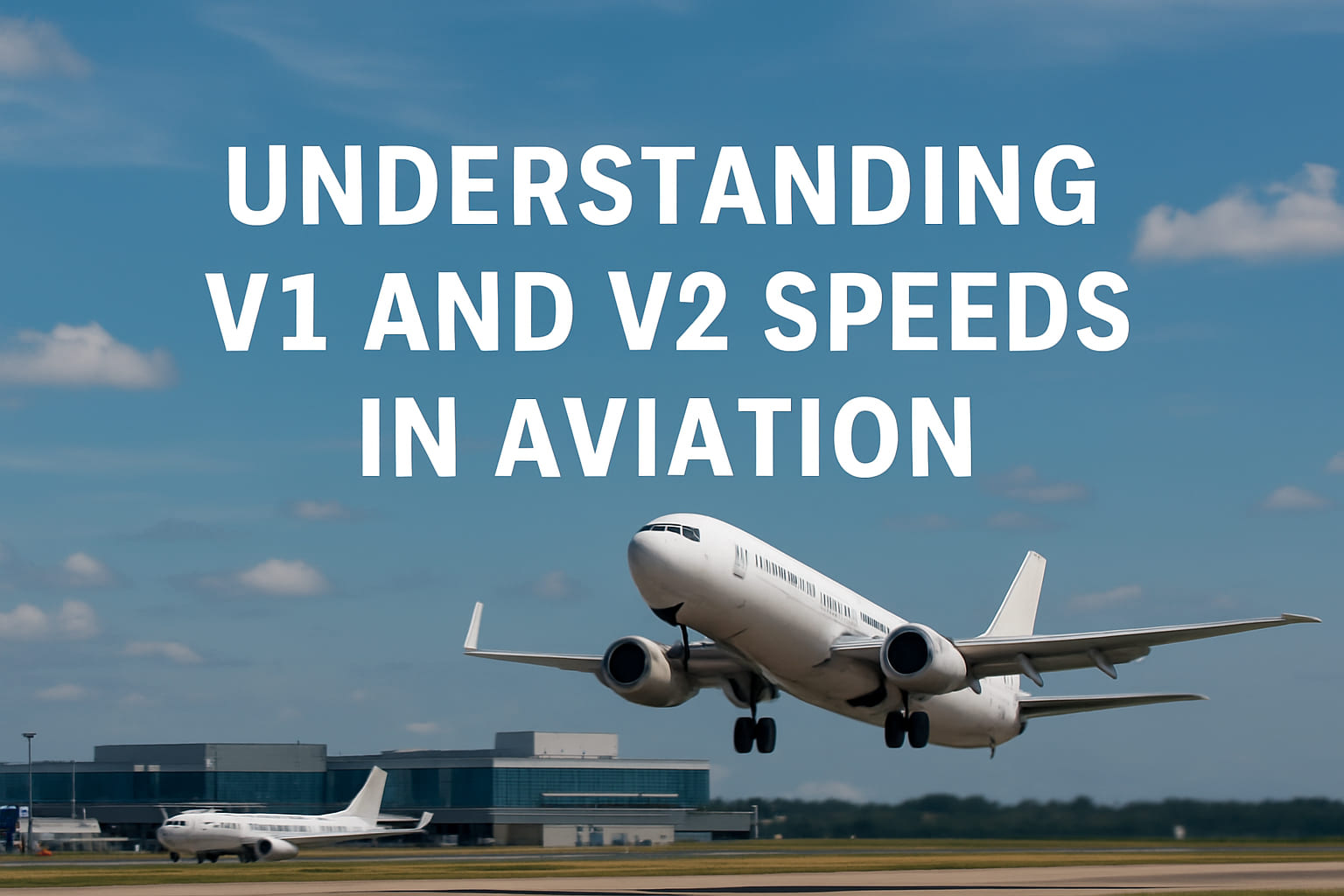During takeoff, pilots rely on a set of critical numbers for safety, particularly the V-speeds V1 and V2. These values aren’t arbitrary; they represent precise moments for key decisions and performance checks that are vital for a safe departure. In simple terms, V1 is the final decision speed to safely abort the takeoff, while V2 is the minimum speed required to continue a safe climb, even with an engine failure. How these speeds are calculated is fundamental to aviation safety.
👉 Check out the offer: aircraft engine stand rent 👈
What Is V1 Speed?
In aviation, V1 is the takeoff decision speed—a critical threshold often called the ‘point of no return.’ It marks the maximum speed during the takeoff roll where a pilot can still safely abort and stop the aircraft on the remaining runway. If an engine fails or another critical issue arises before this point, the crew’s decision is clear: abort the takeoff.
Once the aircraft surpasses V1, however, the takeoff is irreversible and must continue, regardless of any malfunction. This isn’t a gamble; it’s a calculated safety measure. With insufficient runway left to stop, getting airborne to manage the problem is the safer course of action. This crucial speed is meticulously calculated before every flight, factoring in aircraft weight, runway length, and weather conditions.
Importance of V1 in Takeoff Procedures
V1 is critical because it removes ambiguity from a high-stakes, time-critical decision. When a serious problem like an engine failure occurs during the takeoff roll, the flight crew has mere seconds to react. V1 provides a clear, pre-calculated threshold, creating a simple binary choice: before this speed, abort; after it, the only safe option is to fly.
What Is V2 Speed?
While V1 is the critical decision speed on the runway, V2 governs what happens immediately after liftoff. As the ‘takeoff safety speed,’ V2 represents the minimum speed the aircraft must maintain to climb safely and effectively, even if an engine fails. Once the decision to fly is locked in at V1 and the aircraft rotates into the air, V2 becomes the crew’s next target.
This speed isn’t arbitrary—it’s a carefully calculated performance guarantee. V2 ensures the aircraft can achieve the specific, positive climb gradient mandated by aviation regulations, a speed it must reach by 35 feet above the runway surface. Maintaining at least V2 provides the power needed to clear obstacles and gain altitude at a safe rate, even with an inoperative engine.
The ‘safety’ in ‘takeoff safety speed’ also refers to aircraft control. In an engine-out scenario, the plane experiences asymmetric thrust, causing it to yaw. Flying at or above V2 guarantees sufficient airflow over the control surfaces—particularly the rudder—giving the pilot the authority to counteract this yaw and maintain stable, controlled flight.
V2 and Climb Performance
V2 is not a fixed number, but a dynamic variable calculated for every takeoff to ensure the aircraft has the guaranteed performance needed for the specific conditions of its departure.
Several critical factors influence this calculation:
- Aircraft Weight: A heavier plane requires a higher speed to climb effectively.
- Environmental Conditions: High airport elevations or hot temperatures result in less dense air, which reduces engine and aerodynamic performance, necessitating a higher V2.
- Runway Characteristics: The length and condition of the runway are also factored into the overall performance equation.
Before each flight, pilots must calculate the precise V-speeds for takeoff. While this once involved complex manual calculations with performance charts, modern cockpits have simplified the process. Today, pilots rely on the aircraft’s Flight Management System (FMS) or an Electronic Flight Bag (EFB) to compute these values instantly. These systems automatically process the aircraft’s weight, weather data, and runway information to provide accurate V1, VR, and V2 speeds, improving safety and reducing crew workload.
Differences Between V1 and V2
| Feature | V1 (Decision Speed) | V2 (Takeoff Safety Speed) |
|---|---|---|
| Primary Function | A decision point: to abort the takeoff or continue. | A performance benchmark: to ensure a safe climb. |
| Context | On the ground, during the takeoff roll. | In the air, immediately after liftoff. |
| Core Concern | Runway stopping distance. | Climb gradient and obstacle clearance. |
| Engine Failure Rule | Before V1: Abort. After V1: Continue takeoff. | Maintain V2 to ensure a safe climb on remaining engine(s). |
The relationship between these speeds is sequential and unfolds rapidly during takeoff. As the aircraft accelerates, the pilot calls out “V1,” locking in the decision to fly. Next, the pilot pulls back on the controls at rotation speed (VR) to lift off. Once airborne, the immediate goal is to achieve and maintain V2, which must be reached by 35 feet above the ground to guarantee a safe climb.
V1 and V2 in Context of V—speeds
V1 and V2 are not isolated figures; they are part of a system of airspeeds known as ‘V-speeds.’ The ‘V’ stands for velocity, and these standardized reference points define the safe operating limits and performance benchmarks for an aircraft. This framework gives pilots a clear, unambiguous language for managing performance from engine start to shut down, ensuring every part of the flight has a defined safety margin.
While V1 and V2 govern the critical takeoff phase, other V-speeds manage different stages of flight, including:
- V_S (Stall Speed): The minimum speed at which the wings generate enough lift to maintain flight.
- V_LE (Maximum Landing Gear Extended Speed): The maximum speed at which the aircraft can be safely flown with the landing gear extended.
- V_APP (Approach Speed): The target speed used during the final approach for landing.
Each of these speeds—from the decision on the runway to the final moments before touchdown—forms a critical part of a safety net. This framework ensures that pilots have precise, calculated targets to fly, accounting for factors like aircraft weight and weather conditions. Understanding where V1 and V2 fit into this broader context reveals how they work alongside dozens of other benchmarks to ensure safety and efficiency throughout the entire flight envelope.
Regulatory Standards for V—speeds
V-speeds are not suggestions but strict standards, defined and enforced by regulatory bodies such as the Federal Aviation Administration (FAA) and the European Union Aviation Safety Agency (EASA). These standards create a universal safety framework, establishing speeds like V1 and V2 as legally binding requirements for both aircraft certification and daily operations.
Impact of V—speeds on Aircraft Design
V-speeds are more than just operational numbers for pilots; they are fundamental engineering targets that shape an aircraft from its earliest design stages. An aircraft’s ability to meet specific V1 and V2 criteria is a non-negotiable requirement for certification, forcing engineers to design its core systems around these performance goals. This ensures safe takeoff performance is built into the very physics of the plane, and is fundamental to its operational capabilities.
This influence is visible across the aircraft’s core systems:
- Propulsion and Aerodynamics: Engines must provide enough thrust to accelerate to V1 and continue a safe climb even with an engine failure. The wings, flaps, and slats are designed to generate sufficient lift at V2 to achieve the required climb rate.
- Deceleration Systems: Brakes, spoilers, and thrust reversers must be powerful enough to bring the aircraft to a full stop from V1 within the available runway. Similarly, the landing gear must be strong enough to withstand the immense forces of a high-speed rejected takeoff.

